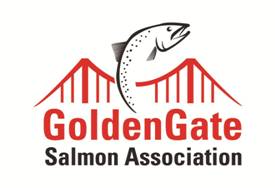 Salmon Protection & Restoration Accomplishments (2013-2015)
Salmon Protection & Restoration Accomplishments (2013-2015)
The restoration of Painters Riffle
Although relatively small in size, a key salmon rearing area in need of restoration near Redding called Painters Riffle was identified because of the precedent it would establish. The greatest obstacle was in dealing with a state bureaucracy that had grown over protective in its institutional mandate. State bureaucrats believed they were doing the right thing in erecting virtually insurmountable permitting requirements to keep this simple restoration project from going forward. This same mindset, though perhaps well meaning, has to overcome if we’re to restore salmon habitat.
Painters Riffle was a shallow side channel used by spawning salmon for years until a nearby, upstream bridge construction project resulted in tons of gravel being shifted into the riffle. The gravel plugged it and dried it out, making unusable for salmon. GGSA teamed up with the Glen Colusa Irrigation District (GCID) in proposing to use heavy earth moving equipment to simply remove the construction gravel and make the riffle available to spawning salmon once again, which eventually happened.
Painters Riffle before restoration
Considering this was a simple restoration project to bring a natural function back to a section of river impaired by human mistake, permitting should have been quick and easy. But it wasn’t. GGSA and GCID finally prevailed in getting needed permits and the work went quickly in the winter of 2014. By the spring of 2015 salmon were once again spawning in Painters Riffle.
Perhaps more important than adding some additional spawning habitat, this success sent a signal that the modern era of bureaucratic business as usual had to be addressed if meaningful salmon restoration is to occur. All parties agree that great care must be taken in a project of this nature.
During restoration
Painters Riffle after restoration
Arrows point to salmon “redds” in early summer, 2015 after Painters Riffle was restored
Keeping salmon out of ag drainage canals: Knights Landing Outfall Gates
In 2013 GGSA identified the problem of adult salmon mistakenly returning to ag drainage canals in the Central Valley as one in need of a fix. The two biggest problem areas identified were fish swimming into the Yolo Bypass and fish swimming into the Colusa Basin Drain through the Knights Landing Outfall Gates. In 2013 600 adult winter run salmon ended up in the Colusa Basin drain and died before spawning. The drain allows ag runoff water in the western Sacramento Valley to drain south for many miles parallel to the Sacramento River. Near the town of Knights Landing, the ag water flows into the Sacramento River through what were to be one way gates. The only problem is that under certain high flow conditions, the gates became two way gates and allowed salmon into the ag drainage system. After GGSA elevated the issue one of the main ag water suppliers in the area, Reclamation District 108, agreed the problem needed fixing and volunteered time and money to design a better gate system and obtain the needed permits. Because of the winter run debacle a few years prior, the state issued the permits relatively quickly. The work was completed in 2015 and most would agree this particular problem has been solved.
Looks like a river, but it’s not, 2013,
2013, CDFW personnel in the Colusa Basin agriculture water drain trying to catch adult salmon stuck here.
Newly designed outfall gates now keep salmon out of the Colusa basin drain.
Dim the Lights, give fish a chance
Helped persuade the City of Redding to turn down the lights on its iconic Sundial Bridge, reducing predation impacts on vulnerable juvenile salmon, which prefer to migrate at night.
Sundial Bridge in Redding lit up, stopping baby salmon in their migration which makes them easy targets for predators
Sundial Bridge after lights dimmed and redirected to improve salmon survival.
Persuaded California to do first ever salmon egg injection pilot project to compensate for drought losses
Injecting fertilized salmon eggs directly into river gravel can be a useful drought fighting tool when rivers are too hot in the fall to accept eggs then.
Improved trucking, increased survival of baby hatchery salmon
GGSA succeeded in ensuring 30 million hatchery salmon trucked in 2015, pursuant to criteria established through GGSA efforts in 2014. This saved them from lethal in-river conditions. GGSA also initiated and won a commitment from the state to produce an additional two million hatchery salmon in 2016 and 2017.
Other Accomplishments
The drought presents major challenges for salmon and the salmon fishing industry. During this difficult period, GGSA has established a remarkable track record of success in advocating for the protection and restoration of Central Valley salmon.
- Helped redirect federal efforts to invest tens of millions annually on salmon protection and restoration projects.
- Inserted salmon restoration provision in federal drought legislation (H.R. 2983 and S. 1837
- Inserted salmon restoration provisions in a draft state water bond.
- Helped organize and testified at the first ever State legislative oversight hearing regarding the impacts of the drought on salmon.
- Stopped two bad bills in the state capitol that would have harmed salmon (AB 1201 and AB 1242.)
- Prepared and publicized an ambitious 26 point plan to rebuild Central Valley salmon populations.
- Obtained and publicized a CDFW accounting of devastating fall-run losses to 2014 fall run.
- Increased awareness of drought impacts to salmon and salmon fishing communities through numerous TV, radio, and news articles.
- Got Livingston Stone winter run salmon hatchery to time releases of its fish to coincide with storm runoff
